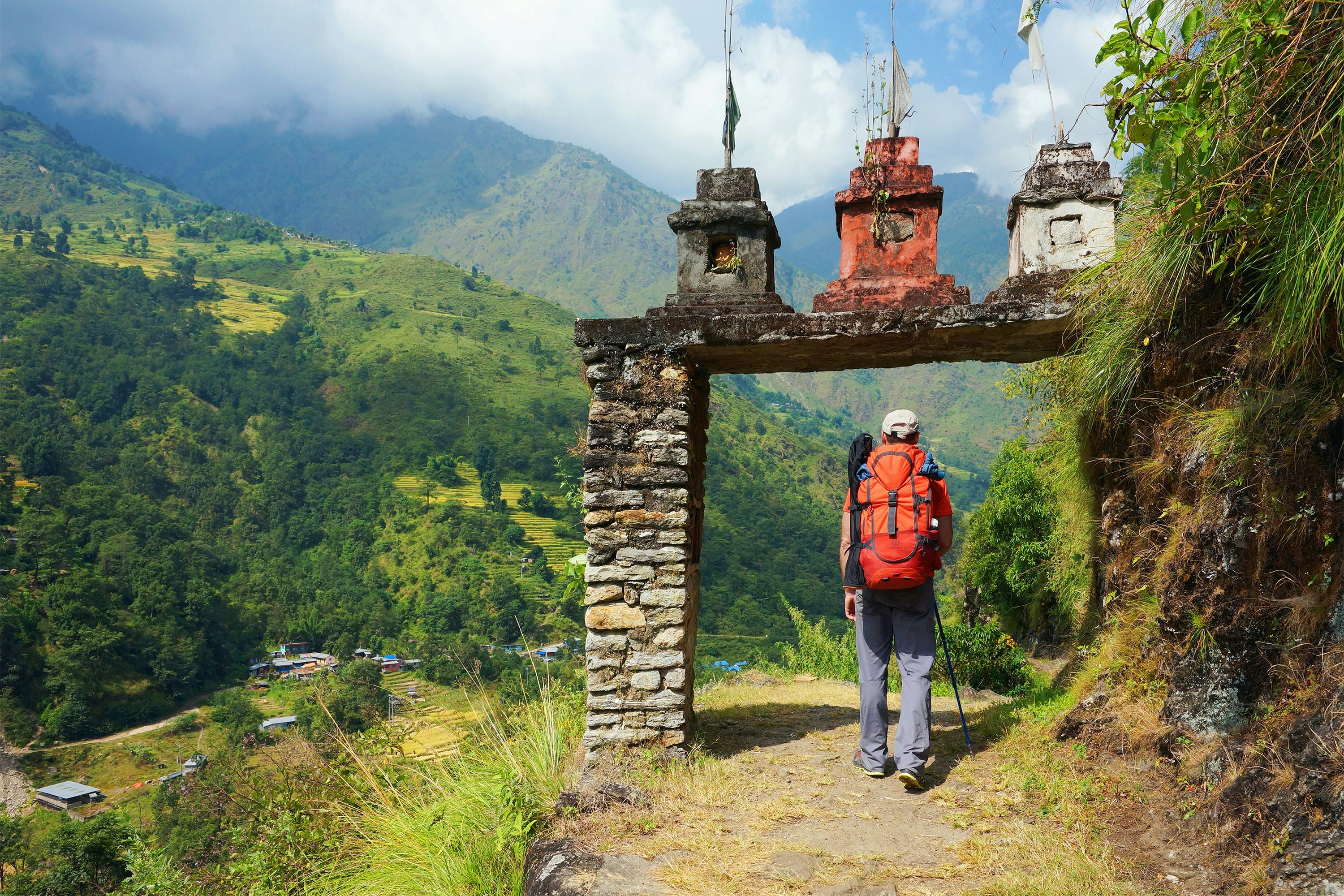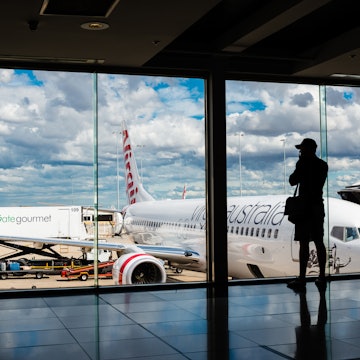

Don't start planning your round-the-world trip without reading this guide © Getty Images
In 1924, a team of aviators from the USA successfully completed the first-ever circumnavigation of the globe by airplane, a feat that took 175 days, 76 stops, a cache of 15 Liberty engines, 14 spare pontoons, four aircraft and two sets of new wings. This achievement ushered in an era of international air travel, and nearly a century later, travelers are still creating their own round-the-world itineraries.
You might not have the same worries as those early aviators, but planning a round-the-world trip has never been a more complex process. As COVID-19 continues to alter world travel, heading out on a multi-country trip might be more complicated than it has been in decades. While it might not be the right time to hit the road, luckily it's never too early to start figuring out the logistics of a trip around the globe. After all, who doesn't have a lot of pent-up wanderlust at the moment?
When it comes to booking your trip, there are several options for booking your airfare, as well as flexibility on timing, destinations and budget. But don't let that overwhelm you – start here with our handy guide on how to plan that round-the-world trip you’ve always dreamed of.
Where and how to get a round-the-world plane ticket
The most economical way to circumnavigate the globe is to buy a round-the-world (RTW) plane ticket through a single airline alliance. These are confederations of several different airlines that make it simple to maximize the number of places you can travel and pay for it all in one place or with points. There are three primary airline alliances to choose from: Star Alliance, OneWorld and Skyteam. Star Alliance is a coalition of 26 airlines that fly to 1300 airports in 98% of the world’s countries. OneWorld includes 14 airlines traveling to 1100 destinations in 180 territories. Skyteam is made up of 19 airlines that serve 1000 destinations in 170 countries.
Read more: How to save money when you're traveling
Once you pick an airline alliance, whether because of a loyalty program you’re already a member of or because you like its terms, conditions and destination list, you can purchase a single RTW airline ticket made up of several legs fulfilled by that alliance’s partners. The RTW ticket rules vary between each of the airline alliances, with particulars like Star Alliance’s rule that a RTW ticket can include two to 15 stops. But there are some general principles that apply to most RTW tickets, no matter which airline group you go with.
You typically must follow one global direction (east or west – no backtracking); you must start and finish in the same country; and you must book all your flights before departure, though you can change them later (though this could incur extra charges). Typically you have one year to get from your starting point to the finish line.
How long do I need for a round-the-world trip?
You could whip around the world in a weekend if you flew non-stop, especially with the advent of new ultra-long-haul flights that can clock in at 20 hours of flight time. However, the minimum duration of most RTW tickets is 10 days – still a breathless romp. To get the most out of your round-the-world ticket, consider stock-piling vacation days, tagging on public holidays or even arranging a sabbatical from work to take off at least two months (but ideally six months to one year). Because most airline alliances give you up to a year to use your ticket, you can maximize your purchase if you plan well.

When should I travel on a round-the-world trip?
The weather will never be ideal in all your stops, so focus on what you want to do most and research the conditions there. In general, city sightseeing can be done year-round (escape extreme heat, cold or rain in museums and cafes), but outdoor adventures are more reliant on – and enjoyable in – the right weather.
Research ahead of time if any must-see destinations or must-do activities will mean facing crowds. For example, if you’re hoping to be in Austria for the famous Salzburg Festival, you’ll want to plan ahead and book your tickets months in advance. If you’re hoping to fit a shorter thru-hike into your round-the-world trip, you’ll want to make sure you’re going in the correct season and starting in the right spot. You won’t get far or have as enjoyable an experience if you’re, say, attempting the Tour du Mont Blanc during the dates of the annual winter marathon or headed northbound on the Pacific Crest Trail in July, missing most of the warmer months.
Accept youʼll be in some regions at the "wrong" time – though this might offer unexpected benefits. For example, Victoria Falls has a dry season each year, which means a slightly less thunderous cascade, but it does open up rafting opportunities and a chance to swim right up to the lip of the falls in The Devil’s Pool. Going to Venice in the winter might mean grayer skies but fewer crowds. Heading to Kenya and Tanzania in April is likely to mean fewer humans, but not fewer chances to spot wildlife, all while saving money on safari. Also keep in mind that mom-and-pop locations have their downtime and holiday seasons as well; don't be too surprised if your local bakery in Paris is closed for a holiday week or two in August.
Where should I go on my round-the-world trip?
The classic (and cheapest) RTW tickets flit between a few big cities, for example, London – Bangkok – Singapore – Sydney – LA. If you want to link more offbeat hubs (Baku – Kinshasa – Paramaribo, anyone?), prices will climb considerably. The cost of the ticket is also based on the total distance covered or the number of countries visited.

Remember, you donʼt have to fly between each point: in Australia you could land in Perth, travel overland and fly out of Cairns. Or fly into Moscow, board the Trans-Siberian railway and fly onwards from Beijing. Pick some personal highlights and string the rest of your itinerary around those. For instance, if youʼre a keen hiker, flesh out a Peru (Inca Trail) – New Zealand (Milford Track) – Nepal (Everest Base Camp) itinerary with stops in Yosemite, Menz-Gauassa and the Okavango Delta.
If budgetʼs an issue, spend more time in less expensive countries and plan budget city breaks along the way. You’ll spend more in metros like Paris, Dubai and San Francisco than in Nusa Tenggara, Budapest and Buffalo.
Tips, tricks and pitfalls of round-the-world tickets
Talk to an expert before you book a round-the-world ticket: you may have an itinerary in mind, but an experienced RTW flight booker will know which routes work best and cost least. A few tweaks could mean big savings in time and money. Hash out a budget well ahead of time, not only for your RTW ticket, but also for the whole trip. Reach out to friends or travel bloggers who have done a round-the-world trip or are full-time travelers because they can offer tips on how to budget for a trip around the world.
Be flexible: moving your departure date by a few days can save money. Mid-week flights are generally cheaper, as are flights on major holidays such as Christmas Day. Avoid days and times popular with business travelers to escape higher prices and more crowded cabins.
Think about internal travel: it can be cheaper to book internal flights at the same time as booking your RTW ticket, but with the global increase of low-cost airlines, you may find it better (and more flexible) to buy them separately as you go.
Be warned: if you donʼt board one of your booked flights (say, on a whim, you decide to travel overland from Bangkok to Singapore rather than fly it) your airline is likely to cancel all subsequent flights.
You might also like:
10 destinations perfect for solo travel
Can visiting lesser-known places offer a better travel experience?
6 things I learned from flying 6 days in a row













